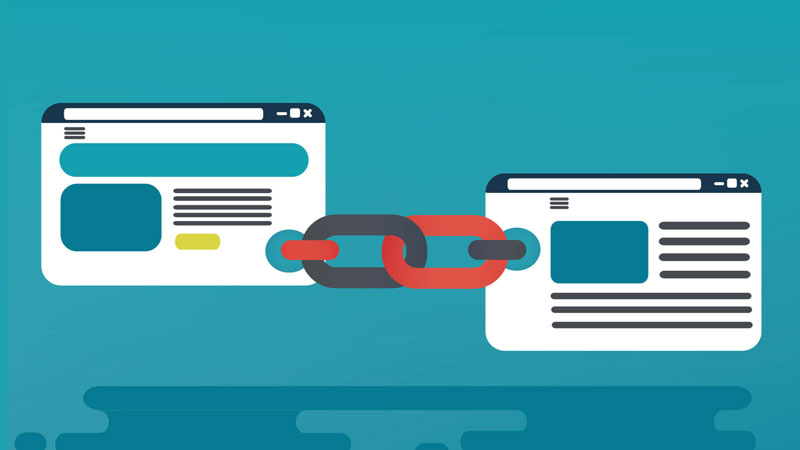A slow-loading website can be the kiss of death for your online presence. Website speed optimization is not just a technical necessity; it’s crucial in search engine rankings, user experience, and overall business success. Fast websites win. Whether you’re an eCommerce brand or a blogger, website speed can make or break your rankings, conversions, and user satisfaction.
In this SEO blog, we’ll explore the importance of website speed, its impact on various aspects of your online presence, and practical tips to optimize your site’s performance.
What is Website Speed Optimization?
Website speed optimization is the act of improving the loading speed and overall performance of a website, with the aim of delivering faster and more efficient user experiences to visitors. It involves implementing various techniques and best SEO practices to reduce the time it takes for web pages to load when accessed by users. The main goal of website speed optimization is to create a seamless and efficient user experience, which can positively impact search engine rankings, user engagement, conversion rates, and overall user satisfaction.
Website speed optimization considers various factors that affect a site’s performance, such as server response times, network latency, file sizes, and the efficiency of website code. A faster-loading website is essential because internet users have increasingly high expectations for quick access to information and content.
Why Website Speed Matters for SEO and Conversions
Website speed matters for several compelling reasons, all of which are interconnected and have a significant impact on various aspects of a website’s performance, user experience, and overall success. Let’s explore why website speed is so crucial:
1. Better User Experience
Users today expect fast-loading websites. When a site takes too long to load, visitors become impatient and may abandon the page, resulting in high bounce rates. A positive user experience plays a crucial role in retaining website visitors, fostering their engagement with the site, and significantly boosting the chances of achieving desired outcomes, such as completing a purchase, subscribing to a service, or signing up for a newsletter.
2. Higher Search Engine Rankings
Search engines, like Google, prioritize user experience, and website speed is a critical factor in determining rankings. Google’s algorithm considers page speed as a ranking signal, meaning that faster-loading websites are more likely to rank higher in search engine results. Improved rankings lead to increased organic traffic, making website speed optimization an essential aspect of SEO strategies.
3. Improved Conversion Rates
Slow-loading websites can have a detrimental impact on conversion rates. Whether it’s an e-commerce site or a lead generation platform, a delay in page loading can lead to cart abandonment, form dropouts, and reduced overall conversions. Conversely, faster page load times can positively influence conversion rates, leading to increased revenue and better ROI on marketing efforts.
4. Mobile Optimization
With the widespread use of mobile devices, website speed is even more critical. Mobile users frequently experience slower internet connections and have limited data plans. Optimizing website speed for mobile devices ensures a smooth experience, reducing bounce rates and encouraging engagement.
5. Enhanced Credibility and Trust
A fast-loading website reflects professionalism, reliability, and competence. On the other hand, a slow website can create a negative perception of your brand, leading visitors to question your credibility and trustworthiness.
6. Accessibility
A fast website is more accessible to users with various internet connections, including those with slower connections in rural areas or regions with limited infrastructure.
7. Competitive Advantage
In competitive markets, website speed can serve as a differentiator. If your site loads faster than your competitors, you have a higher chance of attracting and retaining customers.
8. User Retention and Loyalty
A fast website contributes to a positive user experience, leading to higher user satisfaction and loyalty. Satisfied users are more likely to return to your website and become repeat customers.
How to Measure Website Speed
Measuring website speed is essential to assess the performance of your website and identify areas that need improvement. There are several tools and metrics available to measure website speed, and each provides valuable insights into different aspects of performance. Here are some common methods and tools for measuring website speed:
1. Page Load Time
Page load time is the time it takes for a web page to fully load in a user’s browser. It is one of the most critical metrics for website speed measurement. Various tools can help you measure the page load time, such as:
- Google PageSpeed Insights: This tool from Google analyzes the content of a web page and provides performance insights for both mobile and desktop versions. It also offers suggestions for improving website speed.
- GTmetrix: GTmetrix provides a detailed performance report, including page load time, total page size, and the number of requests made to the server. It also offers performance scores and actionable recommendations.
- WebPageTest: WebPageTest allows you to test your website’s speed from multiple locations around the world and provides a waterfall chart to visualize the loading process.
2. Time to First Byte (TTFB)
TTFB measures the time it takes for the server to respond to a user’s request before any content starts loading. A lower TTFB (Time to First Byte) indicates a faster server response time. Tools like GTmetrix and WebPageTest display the TTFB metric in their reports.
3. Render Time
Render time is the time it takes for a web page to display content visibly to the user. It includes the time required to load all the elements, such as text, images, and interactive components. WebPageTest and browser developer tools can help you measure render time.
4. Number of Requests
The number of requests made to the server to load a web page can impact its speed. Minimizing the number of requests by combining CSS and JavaScript files or using CSS sprites can improve website performance.
5. Content Breakdown
Tools like GTmetrix and WebPageTest provide a breakdown of the page’s content, showing the size of each element (images, scripts, stylesheets, etc.). This breakdown helps identify which components may need optimization.
6. Mobile Speed Testing
With mobile users growing rapidly, it’s essential to measure your website’s performance on mobile devices. Google’s mobile-friendly test and WebPageTest offer options to assess mobile website speed.
7. Browser Developer Tools
Modern web browsers come equipped with developer tools that can be used to measure website speed. The Network tab in Chrome Developer Tools, for example, shows the timeline of network activities, including loading times for various resources.
Top 15 Hacks for Website Speed Optimization
Website speed optimization is a critical aspect of enhancing user experience and improving search engine rankings. While it requires careful analysis and implementation, there are several hacks and best practices that can significantly boost your website’s loading speed. Let’s explore some effective hacks for website speed optimization.
1. Enable Browser Caching
Leverage browser caching to store frequently accessed resources on users’ devices. This way, returning visitors won’t need to fetch the same resources again, leading to faster load times.
2. Compress Images
Large images can slow down your website. Use image compression tools to reduce their file sizes without compromising quality. Consider using modern image formats like WebP, which offer better compression and performance.
3. Minify CSS and JavaScript
Minification of CSS involves removing unnecessary characters, spaces, and comments from CSS and JavaScript files. This reduces their sizes, resulting in faster downloads and parsing by the browser.
4. Combine CSS and JavaScript Files
Combine multiple CSS and JavaScript files into a single file to reduce the number of HTTP requests. This can be done manually or using tools like Gulp or Webpack.
5. Load JavaScript Asynchronously
Load non-essential JavaScript files asynchronously so that they don’t block the rendering of the page’s critical content. This allows the page to display faster, enhancing the user experience.
6. Optimize Server Response Time
Ensure that your web server responds quickly to user requests. Optimize database queries, use caching mechanisms, and consider upgrading to a more powerful server if needed.
7. Use Content Delivery Networks (CDNs)
Utilize a CDN to distribute your website’s static resources across multiple servers worldwide. This reduces the distance between the user and the server, leading to faster load times.
8. Enable GZIP Compression
Enabling GZIP compression on your server compresses website files before sending them to the user’s browser. This compression reduces file sizes, resulting in faster data transfer and ultimately improving website loading speed.
9. Minimize Redirects
Limit the use of redirects as they add extra time to the loading process. Try to link directly to the intended destination to avoid unnecessary redirects.
10. Optimize CSS and Font Loading
Load critical CSS inline to avoid rendering delays. For custom fonts, consider using the “font-display: swap;” property in CSS to ensure that text content appears even before the custom font loads.
11. Preload Key Resources
Use the “preload” attribute for critical resources, like CSS and fonts, to instruct the browser to fetch them early in the loading process.
12. Monitor Plugins and Third-Party Scripts
Be cautious with plugins and third-party scripts as they can add significant overhead to your website. Only use essential plugins, and regularly monitor their impact on website speed.
13. Lazy Load Images
Implement lazy loading for images, which ensures that images are loaded only when they come into the user’s viewport, rather than all at once, reducing initial page load time.
14. Optimize Your Hosting
Choose a reliable and high-performance web hosting provider that offers sufficient server resources to handle your website’s traffic.
15. Regularly Test and Monitor
Regularly measuring website speed and using different tools and metrics can help you stay on top of performance issues and ensure that your website remains fast and user-friendly. It’s important to conduct these tests from various locations and devices to understand how users worldwide experience your site. By continuously monitoring and optimizing website speed, you can provide a seamless and satisfying user experience, which is crucial for the success of your online presence.
Conclusion
In the fiercely competitive digital landscape, optimizing your website’s speed is no longer an option; it’s a necessity. By investing time and effort into website speed optimization, you can enhance user experience, improve search engine rankings, and boost overall business success. Follow the tips mentioned in this guide, stay updated with the latest trends, and continuously test and optimize your website to ensure it remains lightning-fast and user-friendly.
Remember, a faster website is not only appreciated by search engines but also by your users, and ultimately, that’s what matters the most.
Frequently Asked Questions
Aim for a Google PageSpeed Insights score above 90 for both desktop and mobile. However, actual user experience (Core Web Vitals) matters more than the number.
Ideally, your website should load in under 3 seconds. Every additional second can reduce conversions by up to 20%.
Top tools include Google PageSpeed Insights, GTmetrix, Pingdom, and WebPageTest.
Yes. Google uses page speed and Core Web Vitals as ranking factors, especially on mobile.
Run speed tests monthly or after any major website updates, plugin installations, or design changes.
Use Google PageSpeed Insights, GTmetrix, Pingdom, or WebPageTest for accurate speed analysis.




